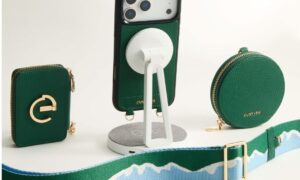The way we exchange value has undergone a profound transformation over centuries, adapting to the demands of evolving societies. From primitive barter systems to advanced digital payment technologies, the journey of payment methods reflects humanity’s ingenuity and the relentless pursuit of efficiency and security in transactions. This article explores the key milestones in the evolution of payment methods and how these changes have shaped modern commerce.
Barter System: The Beginning of Trade
The barter system marked the earliest form of trade, where goods and services were exchanged directly. While functional in small, closed communities, barter had significant limitations, such as the need for a double coincidence of wants and the lack of standard valuation. These inefficiencies paved the way for the introduction of money.
The Advent of Coinage
Around 600 BCE, the first standardized coins were minted in the ancient kingdom of Lydia (modern-day Turkey). Coins facilitated trade by providing a widely accepted medium of exchange with intrinsic value. Precious metals like gold and silver became the foundation of early currencies, as their rarity and durability made them ideal for long-term use.
Paper Money and Banknotes
The introduction of paper money in 7th century China revolutionized commerce by offering a lightweight and convenient alternative to coins. By the 17th century, European banks began issuing banknotes, which represented claims to gold reserves. This marked the transition from commodity-based to fiat currencies, enabling governments to control monetary supply without being limited by physical resources.
The Rise of Digital Banking
The 20th century witnessed the advent of digital banking, beginning with the introduction of credit cards in the 1950s. These plastic cards allowed consumers to make purchases on credit, significantly simplifying transactions. The development of Automated Teller Machines (ATMs) and online banking in subsequent decades further enhanced accessibility to financial services.
Mobile Payments and Cryptocurrencies
The 21st century brought about a payment revolution with mobile payment platforms like PayPal, Apple Pay, and Alipay. These systems enable users to transfer funds, shop online, and even split bills effortlessly. Simultaneously, the emergence of blockchain technology and cryptocurrencies, such as Bitcoin and Ethereum, introduced decentralized and secure payment methods. Cryptocurrencies offer low transaction fees and operate independently of traditional banking systems, making them particularly appealing for international transactions and the gaming industry. There is however a catch that you can read about.
Payment Methods in Online Gaming
One industry where payment methods have seen rapid innovation is online gaming. Players demand fast, secure, and anonymous payment solutions to enhance their experience. Platforms like Spilleautomater Gratis describe the theory and leverage modern payment technologies to cater to their global audience. From credit card payments to cryptocurrency transactions, these advancements have made online gaming more accessible and secure than ever.
Future Trends in Payments
As technology continues to evolve, the future of payments lies in further integration of artificial intelligence (AI), biometric authentication, and seamless digital wallets. AI-driven systems can detect fraud more effectively, while biometric technologies like fingerprint or facial recognition enhance security. Central Bank Digital Currencies (CBDCs) are also gaining traction, aiming to combine the stability of fiat money with the efficiency of digital payments.
Sources for Further Reading
- The History of Money – Encyclopaedia Britannica
- Digital Payments Report 2024 – Statista
- Blockchain and Cryptocurrency – Investopedia
The evolution of payment methods is a testament to human creativity and adaptability. As we move toward a cashless society, understanding this journey not only enriches our appreciation for technological progress but also prepares us for the opportunities and challenges that lie ahead.





























